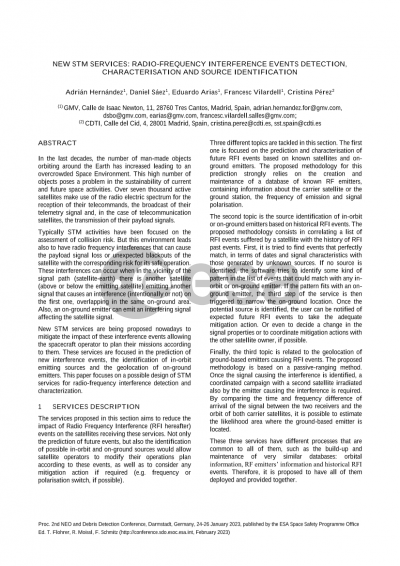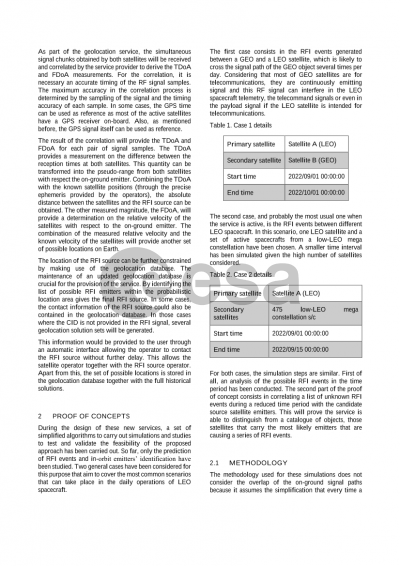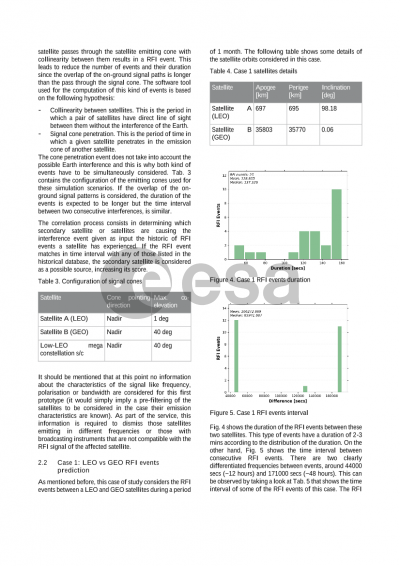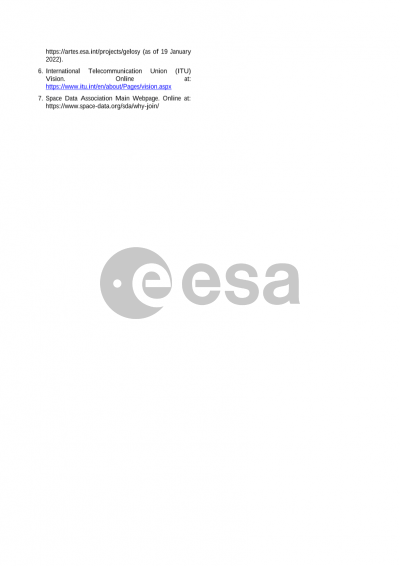Document details

Abstract
All active satellites make use of the radioelectric spectrum for the reception of telecommands and the broadcast of their onboard telemetry to their on-ground control segments. Moreover, telecommunications satellites also make use of this radio spectrum and have dedicated payload antennas dedicated to providing service to on-ground users. This causes that not only the physical Space Environment is becoming more and more crowded but also the radioelectric environment and spectrum.
These interference events take place when in the vicinity of the signal path (satellite-earth) there is another satellite crossing (above or below the emitting satellite) emitting another signal that causes interference on the first one, overlapping in the same on-ground area. There is a second type of radio-frequency interference caused by ground stations, that intentionally (jamming) or not, are emitting in the direction and using the same frequency and polarisation as a receiver satellite which is not the actual target of the signal.
To mitigate the impact of these RFI events, the preparation and provision of a service to predict and characterize this kind of events might be useful. This service will allow the satellite operators to plan their missions and identify the possible source of interferences to take the actions required to reduce, isolate, or eliminate their impact on their operations.
The proposed service is composed of three topics. The first is focused on the prediction and characterisation of future RFI events based on known satellite and ground emitters. The proposed methodology for the prediction of RFI, strongly relies on the creation and maintenance of a database of known emitters, containing information about the carrier satellite, the ground station, the frequency of emission and signal polarisation.
The second topic is the source identification of Space emitters based on historical RFI events. The proposed methodology consists of the historical analysis of a catalogue of orbits and the association between past RFI events and the passes of third-party satellites above or below the affected satellite. Once the potential source is identified, the user can be notified of expected future RFI events to take adequate mitigation actions or even decide on a change in the signal properties.
Finally, the third product is aimed at the geolocation of ground-based emitters causing RFI events: The proposed methodology is based on a passive-ranging method. Once the signal causing the interference is identified, a coordinated campaign with a second satellite irradiated also by the emitter causing the interference is required. By comparing the time difference of arrival of the signal between the two receivers and the orbit of both carrier satellites, it is possible to estimate the position of the ground-based emitter.
This work presents the details of the methodology applied in each case, simulation results and the preliminary service design.
Preview











